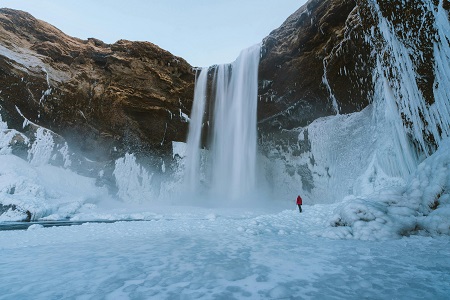Climate change could well be our greatest enemy—and it does not respect borders.
In January 2024, India’s defence minister Rajnath Singh made his statement recognising the fragile link between climate change and national security. His observations came at Uttarakhand’s Joshimath, where he was inaugurated 35 Border Roads Organization projects that spanned 29 bridges and 6 roads across 7 states and union territories. This realisation came from the vantage point of Joshimath in India’s Himalayan state of Uttarakhand, a bare 135 kilometres from the India-China border.
Joshimath itself is a victim of the 2021 Nanda Devi Glacial Outburst that claimed the lives of 200 people and devastated several towns in Uttarakhand state. Climate change and its noxious effect is deep-rooted. It started affecting a country’s peace, safety and security. Extreme weather patterns and climate-induced disasters are enough to destabilise or alter the geopolitical landscape of any country. All the countries are gearing up their resources to combat the climate emergency.
Climate change, however, is not a single dimension issue. There are multiple layers that need to be unpacked and solved. National security involves multiple factors and variations in the temperature are affecting each of these factors.
The first element that takes a toll is the military infrastructures and readiness. Unprecedented events like storms, floods, etc, can seriously damage such facilities and equipments. For instance, the Eastern Naval Command had an estimated loss of around Rs 2,000 crore due to the tropical cyclone Hudhud. Increasing sea-level, salinity and temperature,etc expose major military forces into various known and unknown threats.
Along with that, military personnels need special attention and care. Melting glaciers, droughts, and floods put frontline soldiers at peril. Moreover, armed forces are ones that carry out humanitarian assistance and disaster relief (HADR). Increased frequency and intensity of natural disasters put them under stress.
It is also proven that climate change and conflicts are interlinked. This puts a nation’s security at stake. Climate crisis creates scarcity for resources like food, water and shelter. Added to that displacements can also accelerate the chances of conflicts and security problems.
In the geo-political map of our world, India with its 1.4 billion (140 crore) population is a strategically located country with a rich lode of resources within a fragile neighbourhood. This makes India a land of great opportunity that is vulnerable to all manner of threats. Therefore strengthening the security of the country should be a priority. India’s security policy going forward, should take into account the tasked mission of addressing its climate change issues while tactfully dealing with its geopolitical threats.
Whether in India’s Himalayas, its arid North Western frontier, the tropical forests of its North East or at India’s southern confluence of oceans, Kanyakumari, let us see climate change for what it is—a global enemy—and take steps to combat it by rising above our individual differences. It is time for countries of the world to realise that crumbling mountains and rising sea levels do not distinguish between countries and their borders.
Share your thoughts on this Green Recovery journey that we all should be embarking on today!
Featured Photo : Representation purpose only! Photo by Pramod Tiwari from Pexels




